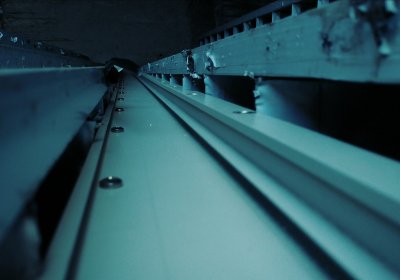Termistors - what is worth knowing about them?

In many machines and equipment that generate heat during operation, it is necessary to protect them against overheating. One of the types of protection used in such cases are thermistors, which change their electrical properties when exposed to temperature.
What are thermistors? Types
Thermistors are semiconductor elements, which, depending on temperature changes, show large changes in resistance, so they have a large temperature coefficient. Metal oxides such as manganese, nickel, cobalt, aluminum, lithium, vanadium or copper are used for their construction. The properties of the thermistors depend on the type and proportion of these components.
They can also be divided into functionalities. There are NTC (negative temperature coefficient) thermistors with decreasing resistance with increasing temperature, PTC (positive temperature coefficient) thermistors with positive temperature coefficient of resistance and thermistors with rapid decrease of resistance in a narrow range of CTR (temperature critical resistor). The thermistors can also be divided into two groups according to how the temperature change is triggered. The first one is directly heated thermistors, in which the change of resistance takes place under the influence of current flowing through the thermistor element or by the change of ambient temperature. The second group includes indirectly heated thermistors, consisting of a thermistor element and an electrically isolated heater, in which changes in resistance may occur under the influence of current flowing through the heater, current flowing through the thermistor or a change in ambient temperature. The shapes of the thermistors are different: plate, pearl or roller.
One of the advantages of thermistors is their small size: from one to a few millimetres. Such small sizes have e.g. thermistors designed for SMD installation, but there are also models designed for mounting through a PCB.
What are thermistors used for?
Thermistors are used to measure temperature, but they are much more sensitive than e.g. thermometers equipped with a resistance sensor. They are used as temperature sensors in systems compensating for changes in circuit parameters during temperature changes. They are also used in systems protecting against excessive current increase. They serve as elements compensating for changes in resistance of other electronic components, e.g. in amplifiers or very low frequency generators.
Where are thermistors used?
The thermistors are used as temperature sensors in electronic thermometers and to protect various types of machines and devices such as electric motors and combustion engines. In addition, they serve as current limiters (electronic fuses), e.g. CTR thermistors are used in electronic circuits of telephone batteries and prevent their damage that may occur as a result of a short circuit or charging with too much current.



Komentarze (0)
Zostaw komentarz ⇾